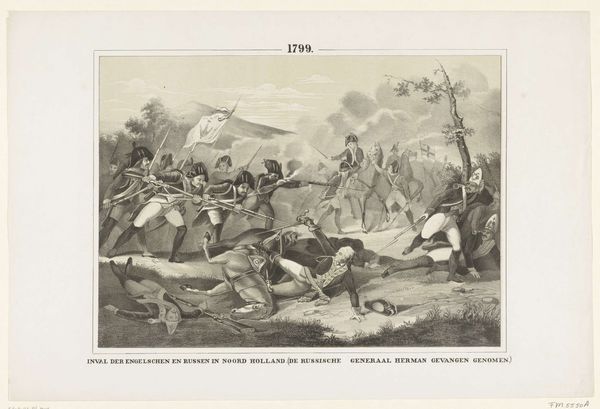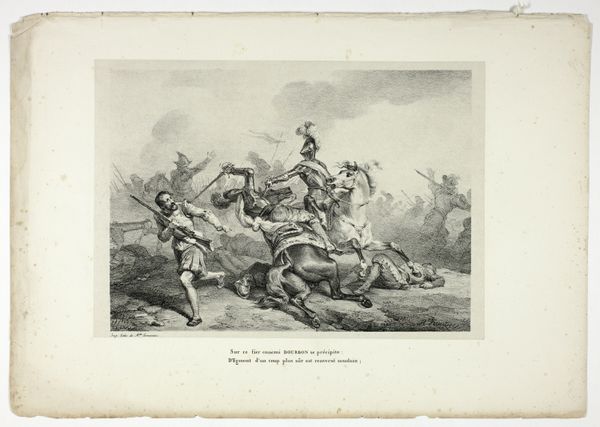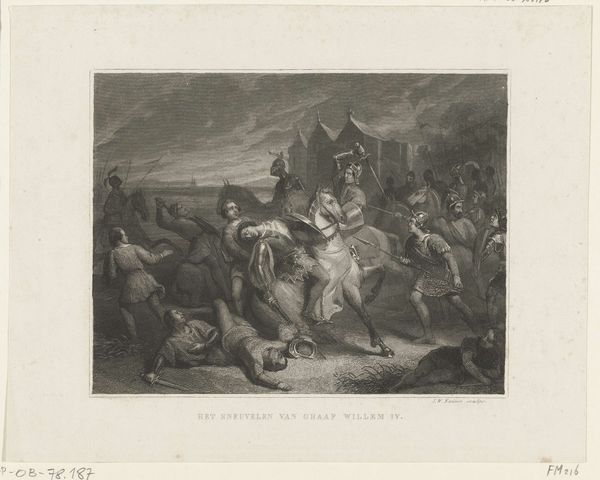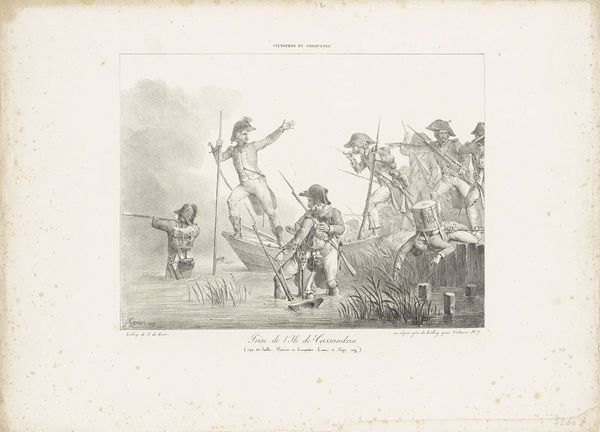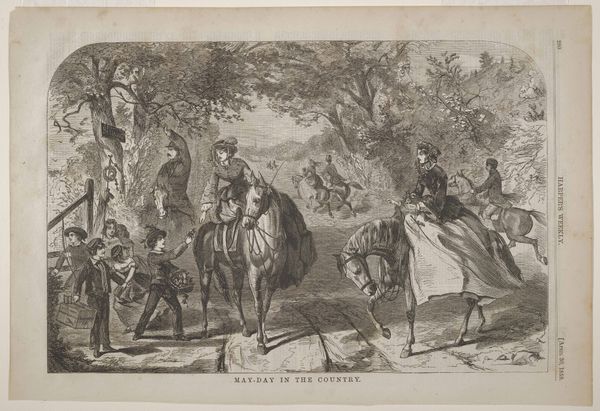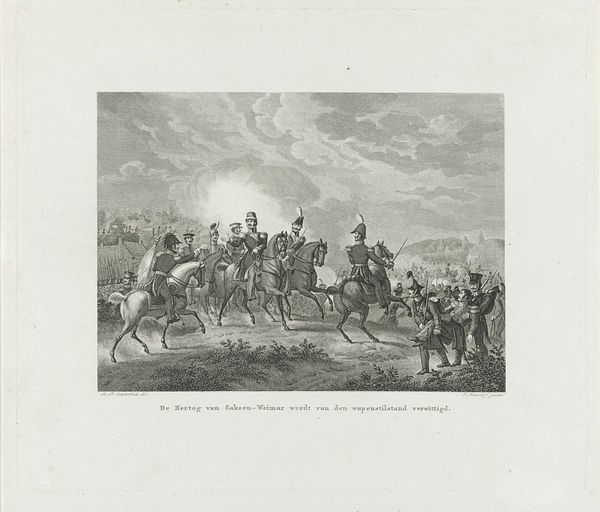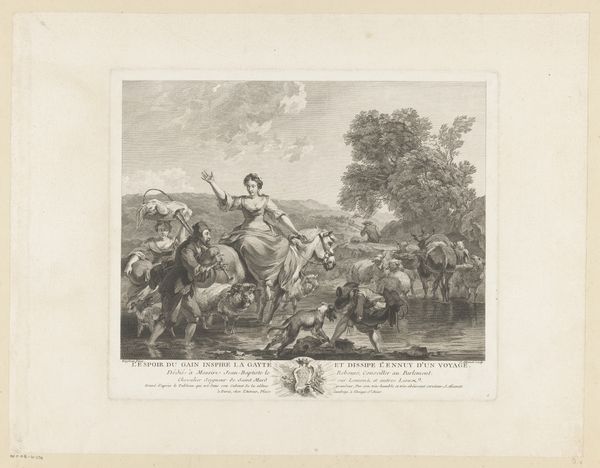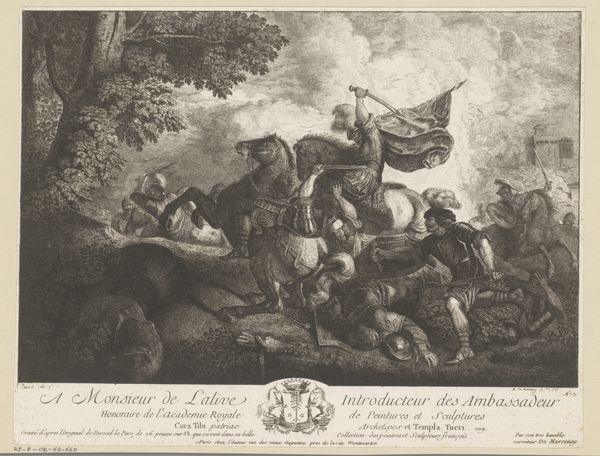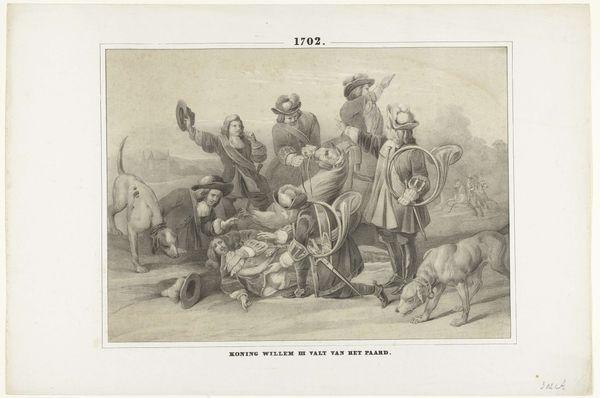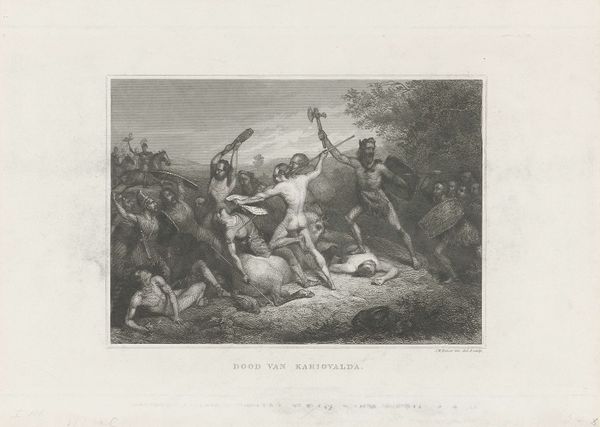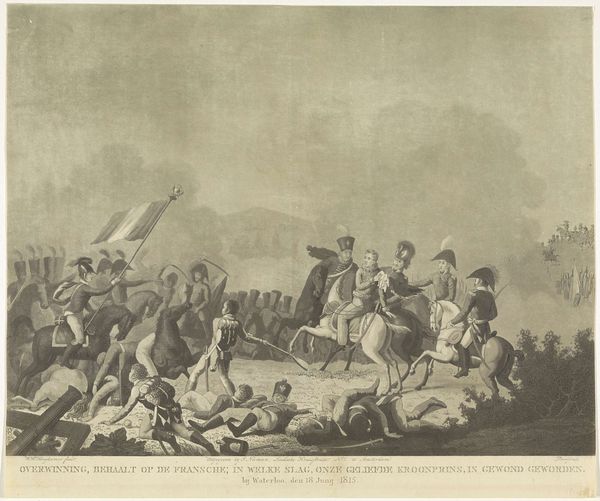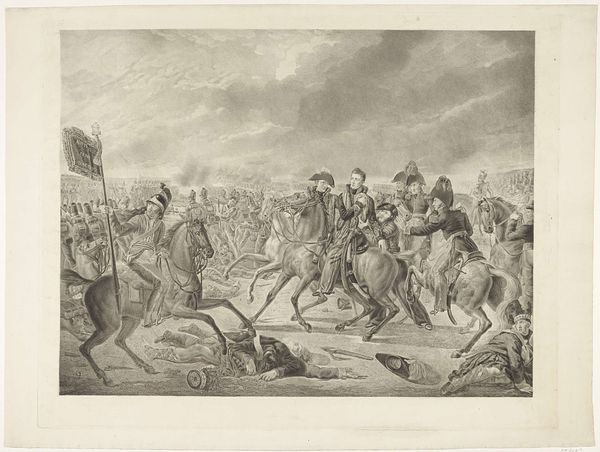
Dimensions: height 309 mm, width 403 mm
Copyright: Rijks Museum: Open Domain
Curator: This print by Tieleman Cato Bruining, created sometime between 1850 and 1855, depicts a scene titled "28 voor Chr. / Apronius door de Friezen verslagen," showcasing Apronius' defeat by the Frisians. Editor: Oh, wow, chaos! Right from the get-go, that’s the word. A whirlwind of bodies, spears, and that poor soul flailing on the ground with his shield—totally outnumbered. It’s a gritty and immediate feel. Curator: The print indeed captures a pivotal historical moment. This work speaks to 19th-century romanticism and the appeal of historical painting, engaging with narratives of nationalism and cultural identity. How does Bruining portray the balance of power between the Roman and Frisian forces, and what does this say about 19th-century perceptions of that conflict? Editor: The tension is thick enough to cut with a rusty sword! Visually, it seems he's playing with perspective, drawing our eye toward the horseman with the standard—Apronius? He thinks he is in command, sitting high on horseback and thrusting the spear like he's on top of the world but I feel Bruining knew the Frisians eventually were victorious here. Even though Bruining places the emphasis on the leader to suggest victory, the scene overall shows how the native tribe overcomes. A pretty good strategy to keep your subject, and message hidden! Curator: It’s fascinating how Bruining uses line and composition to depict a clear hierarchy and almost suggests Roman superiority while perhaps undermining it visually through the overwhelming energy of the Frisians. Note the use of light and shadow, the almost theatrical gestures—Bruining invokes key artistic traditions that invite conversations on themes of colonialism, resistance, and identity construction through history. Editor: Exactly! And the detail in the figures themselves, the faces etched with… grim determination on one side, and utter shock and panic on the other. Makes you wonder what side the artist really favored? Curator: Precisely. The artist's background also is quite interesting, as he also studied history and would certainly know about Dutch history during this same timeframe, the early- to mid-19th century, as many historical battles unfolded. One can see that the art piece invites reflections on national identity as it evolves and how historic and ancient power structures influence the identity we embrace. Editor: Agreed, this print really does take you there. Thanks for highlighting all those powerful points of history here and getting the audience to start to interpret what this print tells them.
Comments
No comments
Be the first to comment and join the conversation on the ultimate creative platform.
